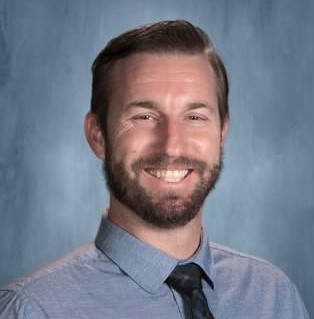Why Schools Need to Change
Student-Centered Evidence at Mission Vista High School
Topics

Today’s learners face an uncertain present and a rapidly changing future that demand far different skills and knowledge than were needed in the 20th century. We also know so much more about enabling deep, powerful learning than we ever did before. Our collective future depends on how well young people prepare for the challenges and opportunities of 21st-century life.
The NGLC Full Spectrum of Evidence toolkit, built in partnership with measurement experts and schools, helps educators use student-centered evidence of their student-centered innovations. Find out what that means for Mission Vista High School.
Ian is one of several students at Mission Vista High School of Vista Unified School District in San Diego County, California, whose reflections on their learning are collected in the Full Spectrum of Evidence gallery of student voices. Constructs that you'll hear in their interview clips—like agency, self-knowledge, belonging, mastery, and purpose—are not easy to measure, but they are what matter most for long-term success. The Full Spectrum of Evidence toolkit provides a research-based primer and resources to successfully gather and use student-centered evidence of hard-to-measure outcomes like these. The toolkit helps schools and districts navigate complex student-centered innovation decisions and evaluate program success by centering the voices of students.
NGLC: What did you notice when you listened to Mission Vista students on the Full Spectrum gallery of voices? How do their reflections connect with the design of your school?
Jeremy:
Our school’s vision statement is: “To be the model of educational excellence through discovery, innovation, and growth.” For the last six years, the collective faculty and staff have focused on creating the conditions for students to understand their individual strengths, interests, and values, and to find ways for students to explore their individual passions to find their way within a bell schedule (the 4x4) that is flexible and allows for exploration. It is so refreshing to hear from students like Ian who certainly took advantage of the course offerings to carve his own path, pursue his interests, and grow as a learner and a person along the way. We hope that all students at Mission Vista have a similar experience.
NGLC: We define “student-centered evidence” as evidence that embeds student voice, including student surveys, reflective assessment practices, intentional listening, and youth-adult partnership. Can you describe one important way that you use student-centered evidence at your school?
Jeremy:
For the past six years, the faculty and staff at Mission Vista have jumped head-first into the concept of personalized learning in which students are given opportunity to have a voice in their learning, co-create learning opportunities with their teachers, work with peers to co-construct learning and understanding, and ultimately, are encouraged to self-direct their learning paths. In order for this to happen, there are a few underlying, yet clear, beliefs: 1) Students can reach whatever expectations we set for them; 2) All students come with unique strengths, interests, and talents; our job as educators is to tap into these; and 3) There are multiple ways in which students can demonstrate learning and/or proximity toward a standard or skill. As adults in the building, we need to pave the way for students to demonstrate their learning in a way that makes the most sense for them and trust that when we give these opportunities, students will meet (and likely far exceed) our expectations.
NGLC: What advice can you give to other school leaders and educators about bringing more student voice into their evidence and decision-making?
Jeremy:
We have to invite students to the design-table of as many elements of their school experience as possible. My experience has been that students are absolutely willing to share their insight, they want to help the adults in the building to improve the learning environment for all students, and they will always—ALWAYS—impress us with their solutions-oriented mindset. Students want to help us, and they know how; it’s our job to listen.
Hear more student voices and access the Full Spectrum of Evidence toolkit at www.studentcenteredevidence.org.
Photo at top of Vista Unified School District students courtesy of NGLC.




